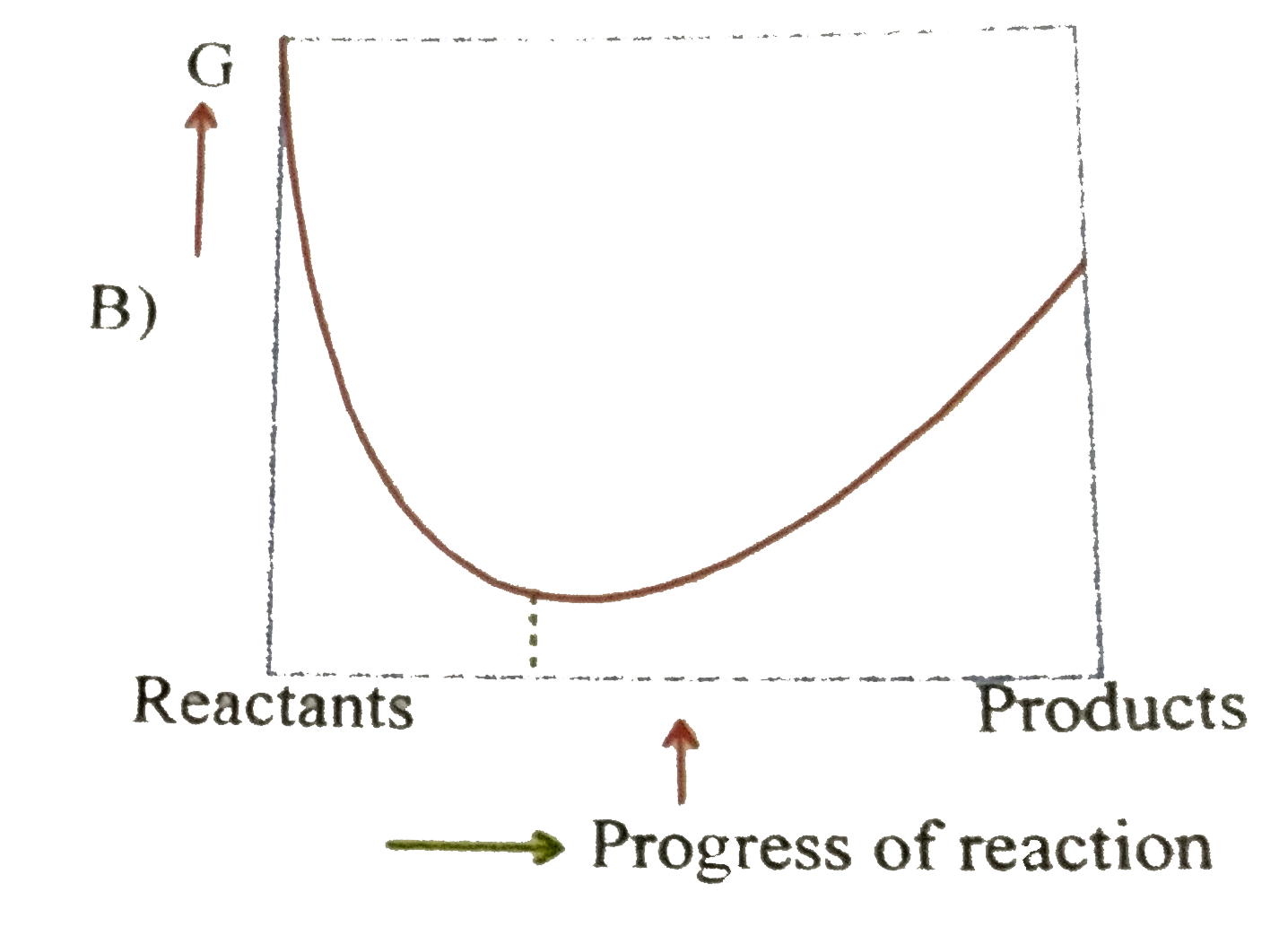What is the activation energy for the reverse of this reaction?
N2O4(g)→2NO2(g)
Data for the given reaction is ΔH = 54 KJ/mol and εa=57.2 KJ.
−54 KJ
3.2 KJ
60.2 KJ
111.2 KJ
The correct Answer is:B
To find the activation energy for the reverse reaction N2O4(g)→2NO2(g), we can use the relationship between the activation energies of the forward and reverse reactions and the enthalpy change of the reaction.
1. Identify the Given Data:
- Activation energy for the forward reaction (Ef) = 57.2 kJ/mol
- Enthalpy change (ΔH) = 54 kJ/mol
2. Understand the Relationship:
The relationship between the activation energies of the forward and reverse reactions and the enthalpy change is given by:
Ef−Eb=ΔH
where:
- Ef = activation energy of the forward reaction
- Eb = activation energy of the reverse reaction
- ΔH = enthalpy change of the reaction
3. Rearranging the Equation:
We need to find the activation energy for the reverse reaction (Eb). Rearranging the equation gives:
Eb=Ef−ΔH
4. Substituting the Values:
Now, substitute the known values into the equation:
Eb=57.2kJ/mol−54kJ/mol
5. Calculating Eb:
Perform the calculation:
Eb=57.2−54=3.2kJ/mol
6. Final Answer:
Therefore, the activation energy for the reverse reaction N2O4(g)→2NO2(g) is:
3.2kJ/mol
- Activation energy for the forward reaction (Ef) = 57.2 kJ/mol
- Enthalpy change (ΔH) = 54 kJ/mol
The relationship between the activation energies of the forward and reverse reactions and the enthalpy change is given by:
Ef−Eb=ΔH
where:
- Ef = activation energy of the forward reaction
- Eb = activation energy of the reverse reaction
- ΔH = enthalpy change of the reaction
We need to find the activation energy for the reverse reaction (Eb). Rearranging the equation gives:
Eb=Ef−ΔH
Now, substitute the known values into the equation:
Eb=57.2kJ/mol−54kJ/mol
Perform the calculation:
Eb=57.2−54=3.2kJ/mol
Therefore, the activation energy for the reverse reaction N2O4(g)→2NO2(g) is:
3.2kJ/mol
Topper's Solved these Questions
- BOOK - CBSE COMPLEMENTARY MATERIALCHAPTER - CHEMICAL KINETICSEXERCISE - VERY SHORT ANSWER TYPE QUESTIONS24videos
CHEMICAL KINETICS
- BOOK - CBSE COMPLEMENTARY MATERIALCHAPTER - CHEMICAL KINETICSEXERCISE - SHORT ANSWER-I TYPE QUESTIONS26videos
CHEMICAL KINETICS
- BOOK - CBSE COMPLEMENTARY MATERIALCHAPTER - BIOMOLECULESEXERCISE - SHORT ANSWER-II TYPE QUESTION13videos
BIOMOLECULES
- BOOK - CBSE COMPLEMENTARY MATERIALCHAPTER - CHEMISTRY IN EVERYDAY LIFEEXERCISE - LONG ANSWER TYPE QUESTIONS2videos
CHEMISTRY IN EVERYDAY LIFE
Similar Questions
The activation energy for the reaction ,
O3(g)+NO(g)→NO2(g)+O2(g)
is 9.6 kJ/mole .Prepare an activation energy plot if ΔH∘ for this reaction is 200 kJ/mole . What s the energy of activation for the reverse reaction ?View SolutionCompute the value of ΔS at 298K for the reaction,
H2(g)+1/2O2(g)→H2O(g)
given that, ΔG=−228.6kJandΔH=−241.8kJView Solution
Knowledge Check
- Question 1 - Select One
What is the activation energy for the reverse of this reaction?
N2O4(g)→2NO2(g)
Data for the given reaction is :ΔH=+54kJandEa=+57.2kJ:A−54kJB+3.2kJC+60.2kJD+111.2kJ - Question 2 - Select One
The thermochemical reaction
CH4(g)+2O2(g)→CO2(g)+2H2O(l)ΔC_(C)H=−890.3KJ mol−1 is an example of -Aenthalpy of atomizationBenthalpy of combustionCenthalpy of solutionDNone of these - Question 3 - Select One
The activation energy for the forward reaction X→Y is 60kJmol−1 and ΔH is −20kJmol−1. The activation energy for the reverse reaction is
A40kJmol−1B60kJmol−1C80kJmol−1D20kJmol−1
Calculate the standard N- H bond enthalpy from the following data :
N2(g)+2H2(g)→2NH3(g)ΔH∘=−83kJ
ΔH∘(N=N)=946kJmol−1,ΔH∘(H−H)436kJmol−1View SolutionDetermine whether the reaction N2O4(g)→2NO2(g)
is spontaneous at 25∘C from the following data :
ΔfH∘(N2O4)=9.16kJmol−1
ΔfH∘(NO2)=33.2kJmol−1
S∘(N2O4)=304.2JK−1mol−1
S∘NO2=240JK−1mol−1
At what temperature will the reaction become spontaneous ?View SolutionThe enthalpy of reaction for thr equation
2H2(g)+O2(g)→2H2O(l) is ΔH∘=−572kjmol
what will be the standard enthalpy for the formation of H2O(l)?View SolutionFor a reversible reaction at constant temperature and at constant pressure the equilibrium composition of reaction mixture corresponds to the lowest point on Gibbls energy Vs progress of reaction diagrams as shown. At equilibrium Gibbs energy of reaction is equal to zero.

For a reaction
M2O3/4(s)→2M(S)+12O2(g)ΔH=30KJ/mol and ΔS=0.07KJ/mol/K at 1 atm. The reaction would not be spontaneous at temperatureView Solution2NO(g)+Cl2(g)→2NOCl,ΔH=−38KJ
If the activation energy for the forward reaction is 62 KJ , what is the activation energy for the reverse reaction?View Solution

